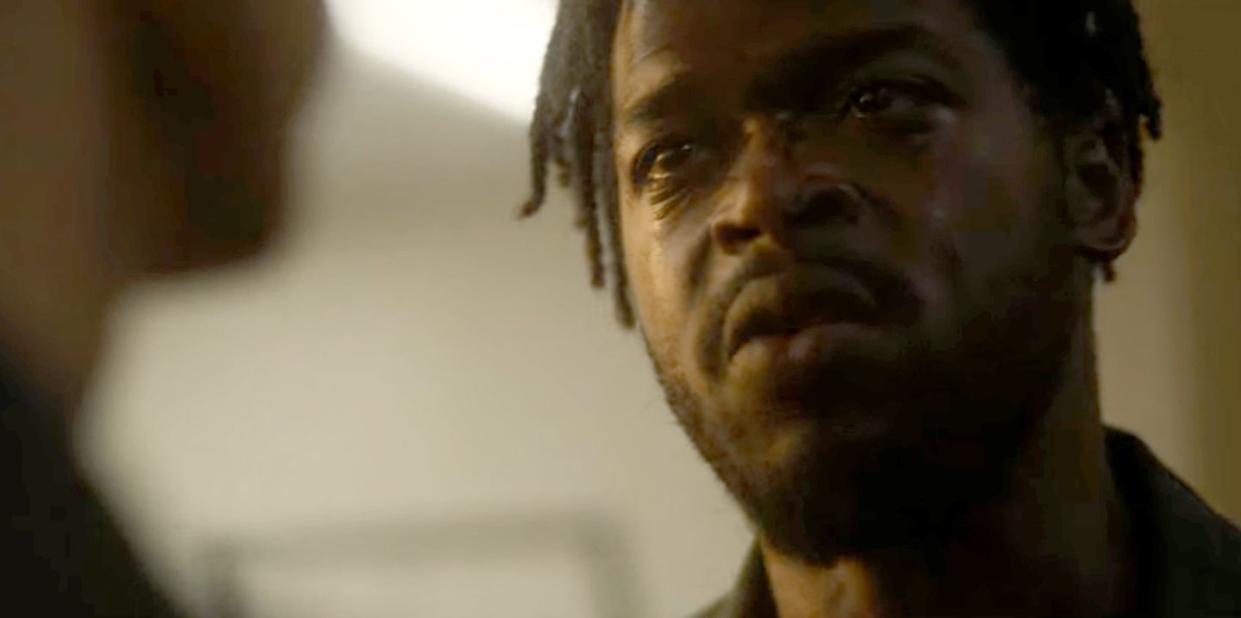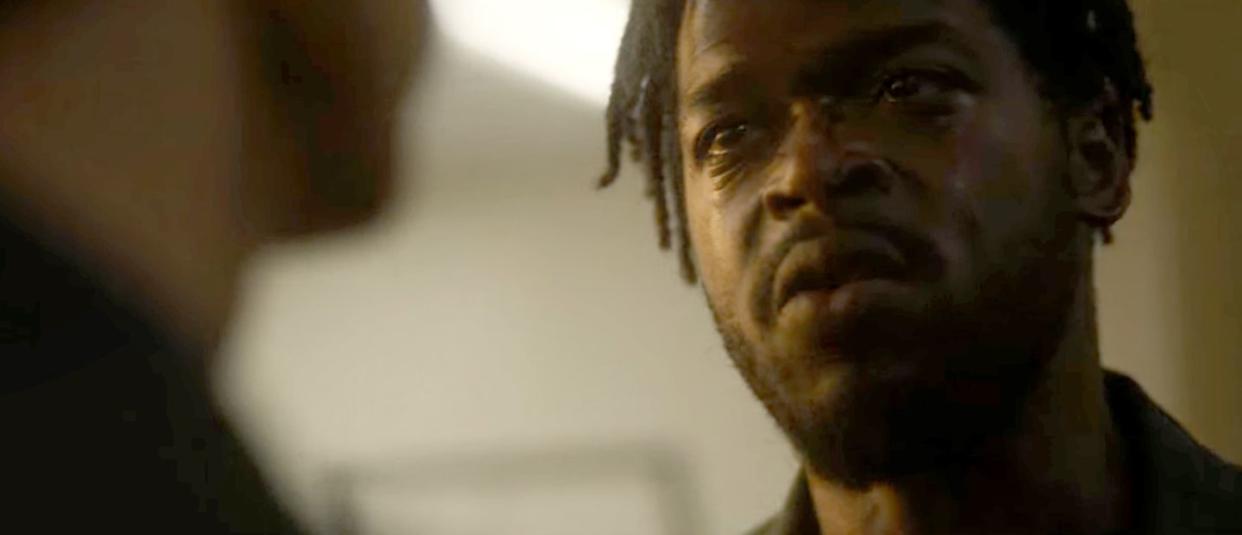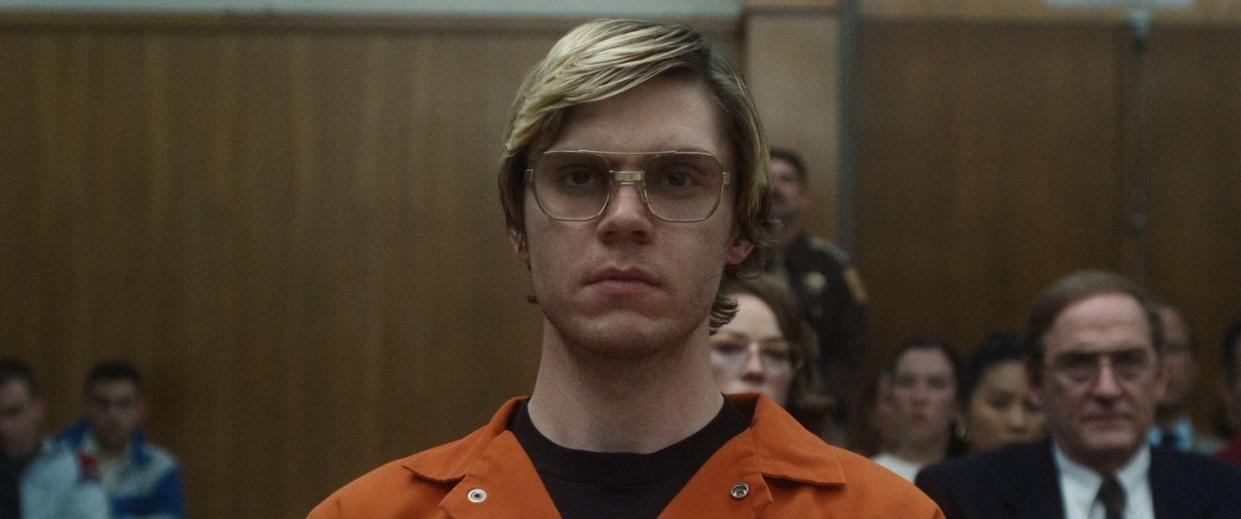What Dahmer leaves out about Christopher Scarver

This article contains discussion of murder and sexual assault some may find upsetting.
Jeffrey Dahmer's story has been told a million times before, most recently in Ryan Murphy's new true crime series DAHMER: Monster – The Jeffrey Dahmer Story for Netflix.
The series focuses on not just Dahmer and his crimes, but more prominently the many attempts neighbours and witnesses made to stop him in his tracks, while Milwaukee police turned a blind eye.
While Wisconsin State had abolished the death penalty by the time of his trial, Dahmer's 15-time life sentence in prison seemed to mark an inevitability that he would be killed there, lest he spend the rest of his life in solitary confinement.
It only took two years and two attempts for someone to take his life – with Christopher Scarver delivering the blow that killed the man known as "The Milwaukee Cannibal".
By the time he was arrested in 1991, Dahmer had taken at least 17 lives, most of whom were young gay men of colour. He had decapitated some, eaten body parts of others, and in some cases had tortured them before they were killed.
For many, the death of Dahmer was seen as a blessing, blurring even the most stringent moral code. After all, when you hear he drilled a hole into a 14-year-old's skull before filling his brain with acid… it's hard not to.
But what happened to his killer Christopher Scarver, and why did he do it? Here's the story behind the serial-killer killer, and where he is now.
What was Christopher Scarver in prison for?

Christopher J Scarver Sr, born 1969 in Milwaukee, Wisconsin, was originally in prison for the 1990 murder of Steve Lohman, a training program worker.
A high school dropout, Scarver had trained at the Wisconsin Conservation Corps work programme as a carpenter. He believed after the programme was complete he would be employed full-time, following a promise by supervisor Edward Patts.
However, when the job never materialised (Patts was fired before it could be), an angry Scarver had returned to the centre in order to confront him about it.
By that point, Scarver had been using marijuana for a number of years, and had begun drinking heavily. He'd also started getting motivated by a voice inside his head declaring him the "chosen one".
On June 1, 1990, Scarver returned to the Corps centre to confront them, and found 27-year-old Steve Lohman, Patts's replacement, and site manager John Feyen. Holding Lohman at gunpoint first, he'd demanded money, and when he only received $15, shot Lohman in the head. Despite Lohman being dead, Scarver would then shoot him two more times.
In order to spare his life, Feyen gave Lohman a $3,000 and his credit card to get him to go away.
Scarver was quickly caught, found with the money, gun and credit card from the attack, and arrested. He was convicted for the murder of Lohman, being given a life sentence, later saying he knew he'd done wrong and wasn't sure why he'd snapped the way he did, having had no prior convictions or trouble.
In 1992, he was sent to Columbia Correctional Institution in Portage, Wisconsin.
At the time of the murder, he had recently discovered he was expecting to become a father for the first time, and had been kicked out of his familial home by his mother (according to New York Times).
Why did Christopher Scarver kill Jeffrey Dahmer?

Christopher Scarver made international news when, on November 28 1994, he battered Jeffrey Dahmer to death at the Wisconsin prison.
Scarver, who was 25 years old at the time, had been assigned a work detail with two other inmates – Jeffrey Dahmer and Jesse Anderson, a 37-year-old from Illinois who was serving a life sentence for the murder of his wife in 1992.
The three men were left unattended by guards while they cleaned a restroom at the prison gymnasium. In an interview with New York Post in 2015, Scarver said he felt one of the men poke him in the back while he was working.
"I turned around and [Dahmer] and Jesse were kind of laughing under their breath. I looked right into their eyes, and I couldn't tell which had done it."
Scarver then grabbed a 20-inch metal bar from the weight room of the gym, and followed Dahmer. "He ended up dead. I put his head down," Scarver explained in the interview. He then went on to kill Anderson in the next room.
It should be noted that both Dahmer and Anderson's murders provoked a massive response in race relations in Milwaukee as most of Dahmer's victims were people of colour – largely Black or Hispanic – and Anderson initially led police on a goose chase for two Black men he said had committed his crime.
Some believe this was an added incentive for Scarver. However, officially the killings were not considered a racially-motivated crime by detectives.
In his tell-all interview with New York Post, Scarver said he was motivated to kill Dahmer not due to his vile crimes of murdering, dismembering and eating people – but because, in his eyes, Dahmer seemed unrepentant about it, even making jokes.
"He crossed the line with some people — prisoners, prison staff. Some people who are in prison are repentant — but [Dahmer] was not one of them," he told the paper.

He claims among Dahmer's 'pranks', he would use ketchup packets to mimic blood, and would shape prison food into the shape of body parts to play up his 'Milwaukee Cannibal' persona.
This was later seemingly backed up by Madison pastor, Roy Ratcliff, who said he'd been told by prison guards Dahmer would joke "I bite" and had a "Cannibals Anonymous Meeting" poster in his cell.
However, this claim was rebuked by Gerald Boyle, who had defended Dahmer at his trial, saying taunting wasn't the serial killer's "style".
"Dahmer was such a milquetoast. He would never have done that stuff," Boyle told Milwaukee Journal Sentinal. "He killed people, but he didn't taunt people. I never saw him do anything that would lead me to believe that he would mimic the deaths that he caused. I just don't believe that."
Scarver had never had direct interaction with Dahmer ahead of killing him, instead opting to keep a distance from a serial killer who after moving to general population had to have a prison guard with him at all times because he was a prime target for other inmates.
In the last few months of his life, Dahmer had also become a born-again Christian after studying the Bible, with his baptism occurring just months before his death.
After being arrested for the double murder, Scarver initially pleaded insanity due to his past history with mental health issues.
According to New York Times, shortly after the murder of his first victim Lohman, Scarver declared he was the "chosen one" and had a number of voices telling him what to do. As a result, he'd been on antipsychotic medication and had spent a period of time in the mental health wing of the prison.
However, in the case of his arrest for Dahmer and Anderson's murders, Scarver was declared competent to stand trial. He later changed his plea to no contest in exchange for a transfer to a federal penitentiary.
Where is Christopher Scarver now?
At the time of writing, as per his convictions, Scarver remains in prison at Centennial Correctional Facility, Colorado.
He has since been diagnosed with schizophrenia with behaviours that have been considered a danger to himself and to others.
He continues to be highly religious, and has turned to poetry as a hobby, even releasing his own books, God Seed and The Child Left Behind.
In 2005, Scarver filed a civil rights lawsuit against Wisconsin Secure Program Facility (aka the 'Supermax' prison), for 'violating his constitutional right not to be subjected to cruel and unusual punishment'.
This included, he claims, more than a decade in solitary confinement, with the cells being noted on some official 'levels of restrictment' at the jail being windowless and reaching 100 degrees during the summer. Those on anti-psychotics are prone to heatstroke, making his suffering worse.
The case (via Justia US Law) states that he asked to be moved after three years, with a district court determining "conditions at Supermax are so severe and restrictive that they exacerbate the symptoms that mentally ill inmates exhibit". They added: "Many of the severe conditions serve no legitimate penological interest; they can only be considered punishment for punishment's sake."
However, it was argued his movement into Supermax was NOT a deliberate attempt to cause him undue distress and exacerbate his mental illness. Things like constant illumination of his room was argued to be for his own safety due to suicide attempts, and removal of items from his room was done so to prevent injury.
So, despite back-up of other inmates and a further appeal, the complaint was not held up and thrown out in 2006.
In 2012, he attempted to shop a tell-all memoir about murdering Dahmer.
According to the Milwaukee Journal Sentinel, Christopher's son, Chris Jr, graduated with a degree in sociology in 2014 from Bethany Lutheran College, Minnesota. His impressive smarts had earned him a scholarship, paid in part by the Creative Corrections Education Foundation, set up to help students whose parents are in prison.
He has reconnected with his father, and the pair continue to write to each other.
DAHMER: Monster – The Jeffrey Dahmer Story is available now on Netflix.
If you've been affected by the issues raised in this story, you can access more information from Rape Crisis England and Wales, who work towards the elimination of all forms of sexual violence and sexual misconduct, on their website or by calling the National Rape Crisis Helpline on 0808 802 9999. Rape Crisis Scotland’s helpline number is 08088 01 03 02.
Readers in the US are encouraged to contact RAINN, or the National Sexual Assault Hotline on 800-656-4673.
You Might Also Like
